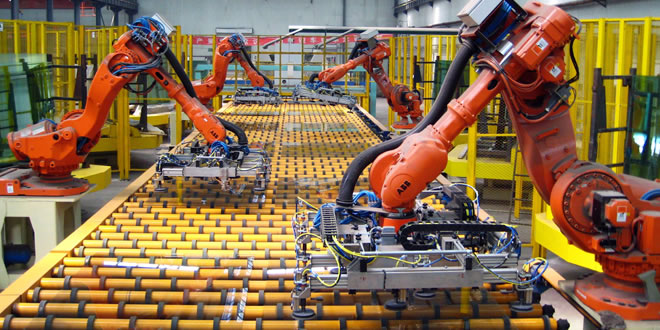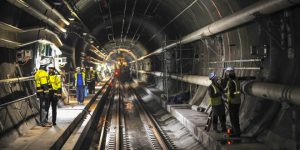The Rise of a Robotic Workforce
It is predicted that by the end of 2013, 1.2 million industrial robots will be working worldwide. This has sparked a huge debate on whether robots are taking over our jobs. Foxconn, Apple’s key manufacturer, is currently deploying one million robots as part of a company-wide effort to adopt more automated manufacturing processes, eliminating the monotonous, repetitive tasks that have long been assigned to low wage laborers. Over the years, USA has lost out on manufacturing jobs as companies have shifted their industries to countries that provide cheaper labor, a measure taken to counter the challenging economic tides. With developments in robotics, USA may be able to draw back manufacturing companies to their stead. As robots take up white collar jobs, workers are freed from basic tasks enabling them to pursue more value-added and creative work. Greater competiveness results in increased sales of manufactured products leading to increased number of manufacturing jobs and creates higher paying support jobs. The International Federation of Robotics (IFR) projects that 1.9 to 3.5 million jobs will be created by robots in the next eight years. According to the US Department of Labor, employment growth in robotics engineering is expected to be in the range of 7%-13% through 2018. Robots are contributing towards the US economy in the following sectors:
1. Manufacturing
With flexible arms and a friendly face screen, Baxter is redefining the way robots can be used in manufacturing environments. It is capable of performing a variety of repetitive production tasks – all while safely and intelligently working next to people. Baxter is just one of the robots working in a manufacturing environment; a sector represents 11% of total employment in USA and is a very important area to the general economic health of the country. A key transformative technology, robotics can revolutionize manufacturing. Automotive manufacturers often use robots for industrial arc welding and spot welding. They also perform spray painting work eliminating the need for protective gear and supplied-air respirators normally required by human painters. Most workers today no longer aspire for low-level factory jobs and the cost of workers keeps rising due to insurance and healthcare costs. Big companies such as Ford and Boeing as well as small and medium sized enterprises have turned to using robots to meet manufacturing demands. Continued progress in this area is dependent on educating a new generation of workers to provide clear career paths for young people entering the field of manufacturing.
2. Medicine
Robotics technology continues to play a critical role towards the improvement in quality of life as well as reduction in the cost of support by allowing people to live independent for a longer period of time. From training the next generation of doctors, dentists, and nurses, to comforting and protecting elderly patients in the early stages of dementia, robots allow for improvement in medical procedures and reduction of the overall cost of care. Medical professionals can make smaller incisions for shorter surgeries as well as remotely diagnose patients by using a robot based at the patient’s location. Robots are also being used for rehabilitation and in intelligent prostheses to help people recover lost function. Pregnant humanoid robots have even been used to prepare and test medical students for various birth complications. As the country’s population ages and the available medical community shrinks, governments and healthcare communities are striving to address some of these issues by turning to robotics.
3. Defense
The application of robotics technology for homeland security and defense continues to grow as innovative technology has improved the functionality and viability of search and rescue efforts, surveillance, explosives countermeasures as well as fire detection. Drones, also known as unmanned aerial vehicles (UAVS) can be controlled remotely by a pilot or fly on a pre-programmed mission. More than 25000 of these systems were used in the intervention in Iraq and Afghanistan. Ground robots also provide added safety for the defense workers in dismantling improved explosive devices and gaining early intelligence before entering unknown territory. For the 2014 World Cup Games, Brazil has bought 30 PackBot robots equipped with cameras and remotely controlled to allow operators to examine suspicious objects and explore threatening environments. The robots will work together with thousands of soldiers who will be patrolling the 12 host cities in Brazil.
4. Services
The International Federation of Robotics (IFR) defines a service robot as robot which operates semi- or fully autonomously to perform services useful to the well-being of humans and equipment, excluding manufacturing operations. These robots are used in both professional and domestic service applications. Professional service robotics includes agriculture, emergency response, infrastructure, forestry, transportation, and other disciplines. More than 110,000 professional robots are in use today and the market is growing rapidly every year according to reports from IFR. On the other hand, personal service robots are deployed for assistance to people in their daily lives in their homes, or as assistants to them for compensation for mental and physical limitations. Domestic vacuum cleaners comprise the largest group of personal service robots. Over 6 million iRobot Roombas alone have been sold worldwide. Service robots are also used in logistics applications such as delivery of beddings, meals, and pharmaceuticals at hospitals.
5. Space
Robots are popularly used for space explorations as they are able to venture into environments that may be hostile to human beings. Much of what we know about the Solar System is due to robotic probes, orbiters, landers, and rovers. NASA uses robots to extend exploration reach beyond human spaceflight limitations, reduce risks and cost in human spaceflight and increase science, exploration and operation mission performance. Robots such as the Mars Curiosity Rover have resulted in tremendous progress in science exploration of Mars. Robots have also been deployed on the international space station to explore how some of the menial tasks can be performed by a robot in comparison to use of astronauts. However, while sending robots to space is cheaper and less dangerous than sending humans, the future of space travel relies on human exploration.



